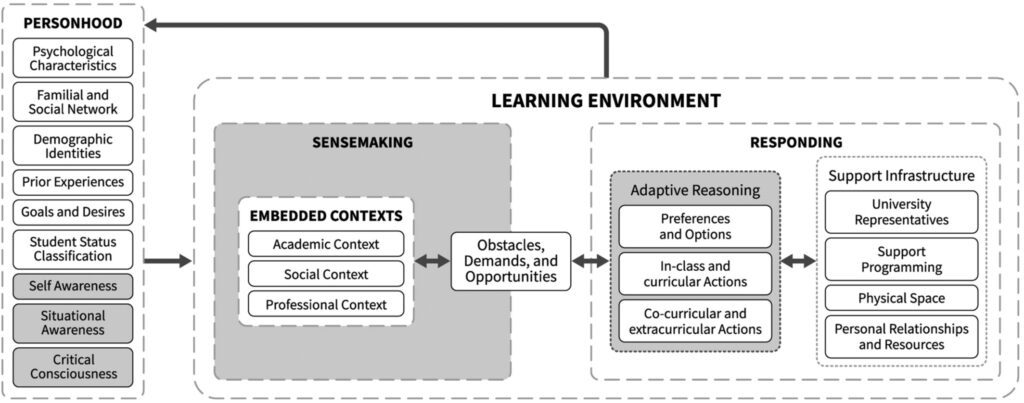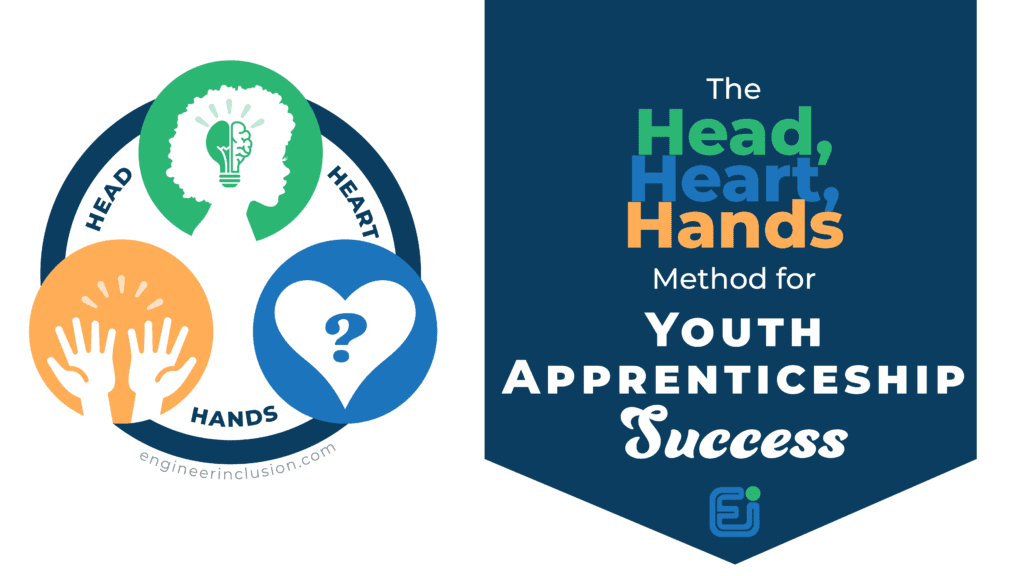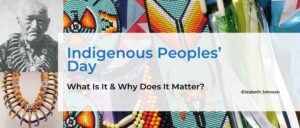Discover how engineering education is undergoing a transformative shift, prioritizing humanity over technicality. This article delves into the critical need to humanize the learning environment, reduce stress, and promote inclusivity, offering insights into a more equitable and supportive future for all engineering students.
Engineering education has historically emphasized technical moreso than social components (ie humans, humanity, and the impact on society). Resounding beliefs and actions persist such as, “I’m just here to teach [engineering subject],” or “Engineering isn’t biased, it just engineering,” or the weed-out culture [1] that prioritizes exclusion. When we do not center the students and their experiences doing engineering, and instead prioritize the technical aspects of the curriculum, by definition, we are creating a dehumanizing environment. To dehumanize is to deprive something, in this case engineering, and its environment, of positive human qualities.
Read Wright et al’s [2] summary and consider whether it is prudent to persist in dehumanized engineering learning environment:
Students can experience stress related to an unsupportive and challenging learning environment, challenges in time management, and academic performance expectations [3]. This culture of stress, which is often normalized in engineering [4], can negatively impact students' mental health. Several studies have aimed to quantify the prevalence of mental health distress among engineering students, and results have varied by population. Of significant concern, higher rates of mental health distress have been found in female and first-generation [5], as well as gender-expansive engineering students [6]. In addition, engineering students who viewed their classrooms as competitive were more likely to suffer from anxiety and depression [7]. These adverse effects were more pronounced for students with marginalized identities, specifically female-identified and Black engineering students. This signals the importance of studying mental health in engineering, especially in marginalized student populations.
Wright et al
The pattern of dehumanization most often leads to a deficit framework to explain why traditionally marginalized and excluded populations don’t thrive in engineering, suggesting that they lack skills needed to succeed, or cultural differences are perceived as detrimental to the learning environment. A deficit mindset does not consider systems thinking. Conversely, however, an asset framework considers how the system resulted in the outcomes, and recognizes students’ cultural differences as beneficial to the learning environment. Therein lies a choice. To humanize the environment, welcomes students and their lived experiences as co-creators of their learning by valuing and affirming their identities.

Embracing a Humanized Pedagogy
A welcoming engineering environment that focuses on belonging prioritizes humanity over everything else. This is a major shift in mindset away from standard or normative engineering values of process, order, efficiency, and earnings. However, there is a history of movements within education towards student-centered, culturally responsive, active learning and evidence for the benefit on student performance and retention. [8-11] Humanized pedagogy is the planning and enactment of pedagogical practices that are aligned with learner experiences and perspectives. [13] It honors, values, and represents multiple ways of knowing, doing, and being, incorporating funds of knowledge [14-16] from traditionally marginalized and excluded populations. For engineering to be welcoming to every student, the course curriculum as well as the implicit cultural curriculum (everything in and outside the coursework) must be anti-racist, feminist, and intentionally inclusive. A humanized pedagogy works to provide equity that balances the systemic issues at play in any given environment.
Adopting an Anti-Deficit Mindset
A humanized approach requires an anti-deficit mindset. Shaun Harper proposes an anti-deficit achievement framework for research on students of color at various junctures of the STEM pipeline, from K–12 schools through doctoral degree attainment and transitions into science research and long-term industry careers. The framework provides examples of anti-deficit questions that would shed light on three pipeline points (pre-college socialization and readiness, college achievement, and post-college persistence in STEM) and nine researchable dimensions of achievement (familial factors, K–12 school forces, out-of-school college preparatory experiences, classroom interactions, out-of-class engagement, experiential and external opportunities, industry careers, graduate school enrollment, and research careers). [17]
Trauma-Informed Pedagogy: Understanding the Impact
Inclusive of a humanized pedagogy is trauma-informed pedagogy. The Substance Abuse and Mental Health Services Association (SAMHSA) defines trauma as an “event, series of events, or set of circumstances that is experienced by an individual as physically or emotionally harmful or life threatening and that has lasting adverse effects on the individual’s functioning and mental, physical, social, emotional, or spiritual well-being.” [18] Racism, sexism, classism, and every other -ism at all four levels of oppression (ideological, interpersonal, institutional, and internalized) is a type of ongoing trauma. [19] Trauma has a neurobiological and socio-emotional impact on individual learning, including: concentration, memory, executive functioning, information processing, language acquisition, as well as class engagement with peers and instructors. [20] Thus, trauma informed pedagogy prepares for the possibility and likelihood of teaching students who have experienced trauma. As Matthea Marquart and Johanna Creswell Báez write, such approaches aim to address “barriers resulting from the impacts of traumatic human experiences” in order to “create classroom communities that promote student wellbeing and learning” (2021, p. 64). [21-22]
If we designed learning experiences and assessments from a place anticipating such grinding chronic trauma, how might we rethink what is important to teach, or what kinds of behaviors we hold our students to?
J. A. Mejia [23] Tweet
A Humanized Approach to Engineering Education
Lee et al’s model [24] (see figure) focuses on the dynamic interactions between the characteristics of students, the embedded contexts in which they are situated, and the support infrastructure of their learning environment. The authors “offer the engineering education community a carefully developed way to analyze student experiences and identify obstacles that must be removed to disrupt marginalization.” They go on to explain their motivation is rooted in a “desire to make undergraduate engineering programs more supportive and easier to navigate, particularly for students from underrepresented or underserved groups.” This humanized approach activates systems thinking.

Figure from Lee et al [24], “Conceptual model of student navigation of the undergraduate engineering learning environment. The model consists of five fundamental relationships (learning environment, personhood, embedded contexts, sensemaking, and responding). It represents the bidirectional process of a student entering a learning environment with their personhood, giving meaning to their collective experiences (i.e., sensemaking), and responding to their obstacles, demands, and opportunities in coordination with the support infrastructure in the learning environment. This model aims to illustrate how the learning environment creates different obstacles for engineering students to understand how students navigate those obstacles. The white boxes represent observable constructs, and the gray boxes represent cognitive processes that are not easily observed.”
Towards Human-Centered Design
We propose an expansion of user-centered design practices common within engineering to a whole student-centered design of the learning environments, where whole means students’ comprehensive identities and experiences are valued, included, and affirmed. We call for a human-centered design of engineering education. Buchanan writes:
Human-centered design is fundamentally an affirmation of human dignity. It is an ongoing search for what can be done to support and strengthen the dignity of human beings as they act out their lives in varied social, economic, political, and cultural circumstances.
Buchanan [25] Tweet
Read the following two examples.
Black engineering students
In a live panel recorded on July 29, 2020, four black engineering students and scholars shared their experiences engineering. In the event’s abstract, they write:
“While many explanations have been offered anecdotally and within literature, this panel discussion intends to offer engineering stakeholders an insider view on what it’s like to be black in engineering… and suggest ways of affirming black students’ academic and racial/cultural identity.” [26] Educators and students alike can learn from stories like those they shared and identify a more humanized, inclusive, anti-racist, and asset-focused pedagogy.
Engineers with disabilities
Analyzing survey data from 1729 students enrolled in eight US engineering programs and 8321 US-employed engineers, Cech found that engineering students and professionals with disabilities are less likely than their peers to experience social inclusion and professional respect at school and work. [27] A humanized pedagogy would not reinforce ableist ideologies and uphold systems of exclusion.
TAKE THE STEP
Embrace Humanized Pedagogy for Inclusive Education
When educators make an effort to identify a humanized pedagogy that prioritizes students over content, draws from an asset rather than a deficit framework for the contributions of students, and employs trauma-based pedagogical approaches, every student will benefit, and those from traditionally excluded and marginalized are more likely to experience feelings of belongingness.
References
- Wallwey, C., & Guanes, G., & Milburn, T., & Grifski, J. (2022, August), Engineering and Exclusionary ‘Weed-Out’ Culture: A Framework for Exploring Literature for Meaning and Influence Paper presented at 2022 ASEE Annual Conference & Exposition, Minneapolis, MN. https://peer.asee.org/41070
- Wright, C. J., Wilson, S. A., Hammer, J. H., Hargis, L. E., Miller, M. E., & Usher, E. L. Mental health in undergraduate engineering students: Identifying facilitators and barriers to seeking help. Journal of Engineering Education. https://doi.org/10.1002/jee.20551
- Ban, N., Shannon, H., Wright, C. J., Miller, M. E., Hargis, L. E., Usher, E. L., Hammer, J. H., & Wilson, S. A. (2022). Identifying common perceived stressors and stress-relief strategies among undergraduate engineering students. Paper presented at the ASEE Annual Conference and Exposition, Minneapolis, MN.
- (Beddoes & Danowitz, 2022)
- (Jensen & Cross, 2021)
- (Hargis et al., 2021)
- (Posselt & Lipson, 2016)
- Felder, R. M. (1995). A Longitudinal Study of Engineering Student Performance and Retention. IV. Instructional Methods. Journal of Engineering Education, 84(4), 361-367. https://doi.org/10.1002/j.2168-9830.1995.tb00191.x
- Jordan, S. S., Foster, C. H., Anderson, I. K., Betoney, C. A., & D. Pangan, T. J. (2019). Learning from the experiences of Navajo engineers: Looking toward the development of a culturally responsive engineering curriculum. Journal of Engineering Education, 108(3), 355-376. https://doi.org/10.1002/jee.20287
- Drake, R., Poleacovschi, C., Faust, K. M., True-Funk, A., & Kaminsky, J. (2023). Civil engineering students as avoidant actors: Using culturally relevant problem-solving to increase critical action attitudes. Journal of Engineering Education, 112(2), 262-283. https://doi.org/10.1002/jee.20507
- Cleave, N. V. (2001). Components of an American Indian Computer Science Transfer Degree Program*. Journal of Engineering Education, 90(1), 55-61. https://doi.org/10.1002/j.2168-9830.2001.tb00567.x
- // intentionally blank
- Fredricks, Daisy & Peercy, Megan. (2022). Multilingual Youth Perspectives on Humanizing Core Practices. 10.4018/978-1-6684-3690-5.ch065.
- Verdín, D., Smith, J. M., & Lucena, J. C. (2021). Recognizing the funds of knowledge of first-generation college students in engineering: An instrument development. Journal of Engineering Education, 110(3), 671-699. https://doi.org/10.1002/jee.20410
- Svihla, V., & Chen, Y. (2022). A funds of knowledge approach to developing engineering students’ design problem framing skills. Journal of Engineering Education, 111(2), 308-337. https://doi.org/10.1002/jee.20445
- Wilson-Lopez, A., Mejia, J. A., Hasbún, I. M., & Kasun, G. S. (2016). Latina/o Adolescents’ Funds of Knowledge Related to Engineering. Journal of Engineering Education, 105(2), 278-311. https://doi.org/10.1002/jee.20117
- Harper, S. R. (2010). An anti-deficit achievement framework for research on students of color in STEM. New Directions for Institutional Research, 2010(148), 63-74. https://doi.org/10.1002/ir.362
- Substance Abuse and Mental Health Services Administration. SAMHSA’s Concept of Trauma and Guidance for a Trauma-Informed Approach. HHS Publication No. (SMA) 14-4884. Rockville, MD: Substance Abuse and Mental Health Services Administration, 2014.
- Williams M, Osman M, Hyon C. Understanding the Psychological Impact of Oppression Using the Trauma Symptoms of Discrimination Scale. Chronic Stress (Thousand Oaks). 2023 Jan 17;7:24705470221149511. doi: 10.1177/24705470221149511. PMID: 36683843; PMCID: PMC9850126.
- Johnson, R. Trauma and Learning: Impacts and Strategies for Adult Classroom Success. Minnesota Journal. 2018, 34. Available Online: https://minnetesoljournal.org/journal-archive/mtj-2018-2/trauma-and-learning-impacts-and-strategies-for-adult-classroom-success/
- Marquart, M. & Báez, J. (2021). Recommitting to Trauma-informed Teaching Principles to Support Student Learning: An Example of a Transformation in Response to the Coronavirus Pandemic. Journal of Transformative Learning, 8(1), 63-74.
- Trauma-Informed Pedagogy, https://barnard.edu/trauma-informed-pedagogy
- Mejia, J. A., Revelo, R. A., & Pawley, A. L. (2020). Thinking about racism in engineering education in new ways [Commentary]. IEEE Technology and Society Magazine, 39(4), 18–27. https://doi.org/10.1109/MTS.2020.3031776
- Lee, W. C., Hall, J. L., Josiam, M., & Pee, C. M. (Un)equal demands and opportunities: Conceptualizing student navigation in undergraduate engineering programs. Journal of Engineering Education. https://doi.org/10.1002/jee.20543
- Buchanan, R. (2001). Human Dignity and Human Rights: Thoughts on the Principles of Human-Centered Design. Design Issues, 17(3), 35-39. doi:10.1162/074793601750357178
- Holly, Jr., J., Beebe, C.,Colquitt, D., Tolbert, D. (2020). Do you see me? Hypervisible invisibility #engineeringWhileBlack. Virtual Workshop Panel for the ASEE Commission on Diversity, Equity, and Inclusion. https://diversity.asee.org/deicommittee/2020/05/29/do-you-see-me-hypervisible-invisibility-engineeringwhileblack-2/
- Cech, E. A. (2023). Engineering ableism: The exclusion and devaluation of engineering students and professionals with physical disabilities and chronic and mental illness. Journal of Engineering Education, 112(2), 462-487. https://doi.org/10.1002/jee.20522











